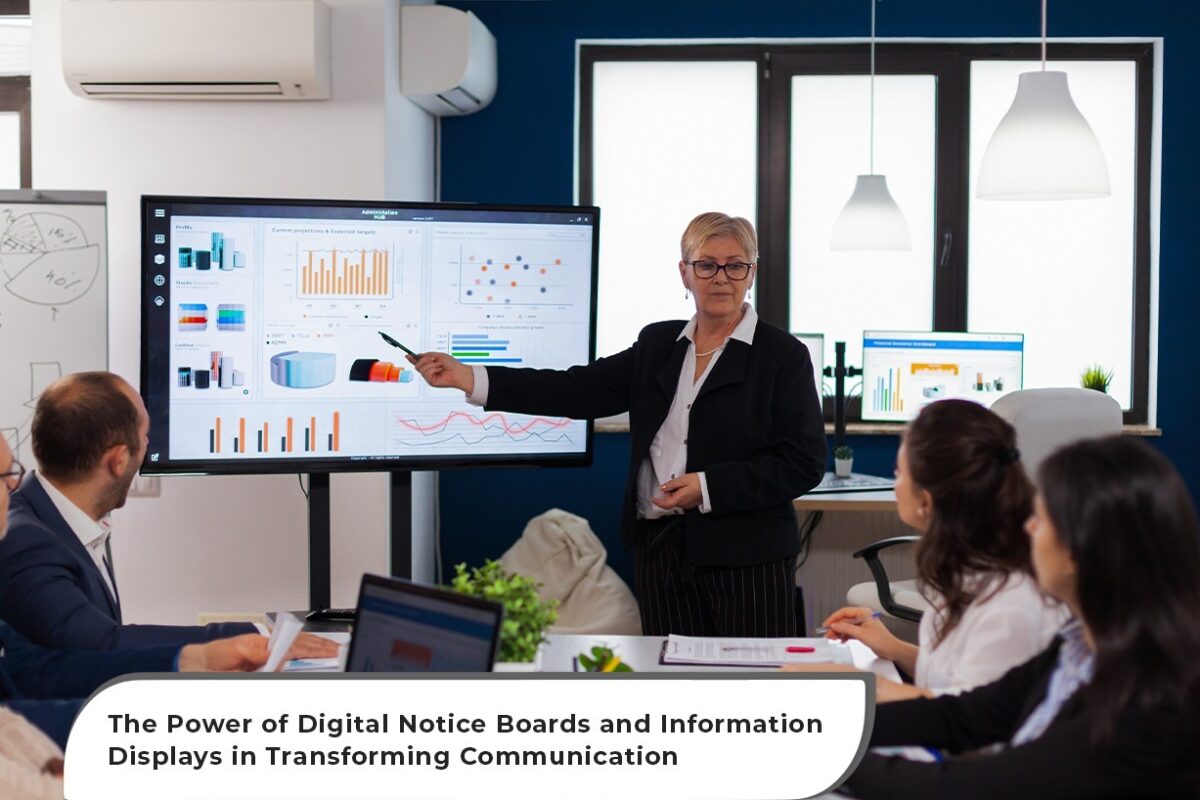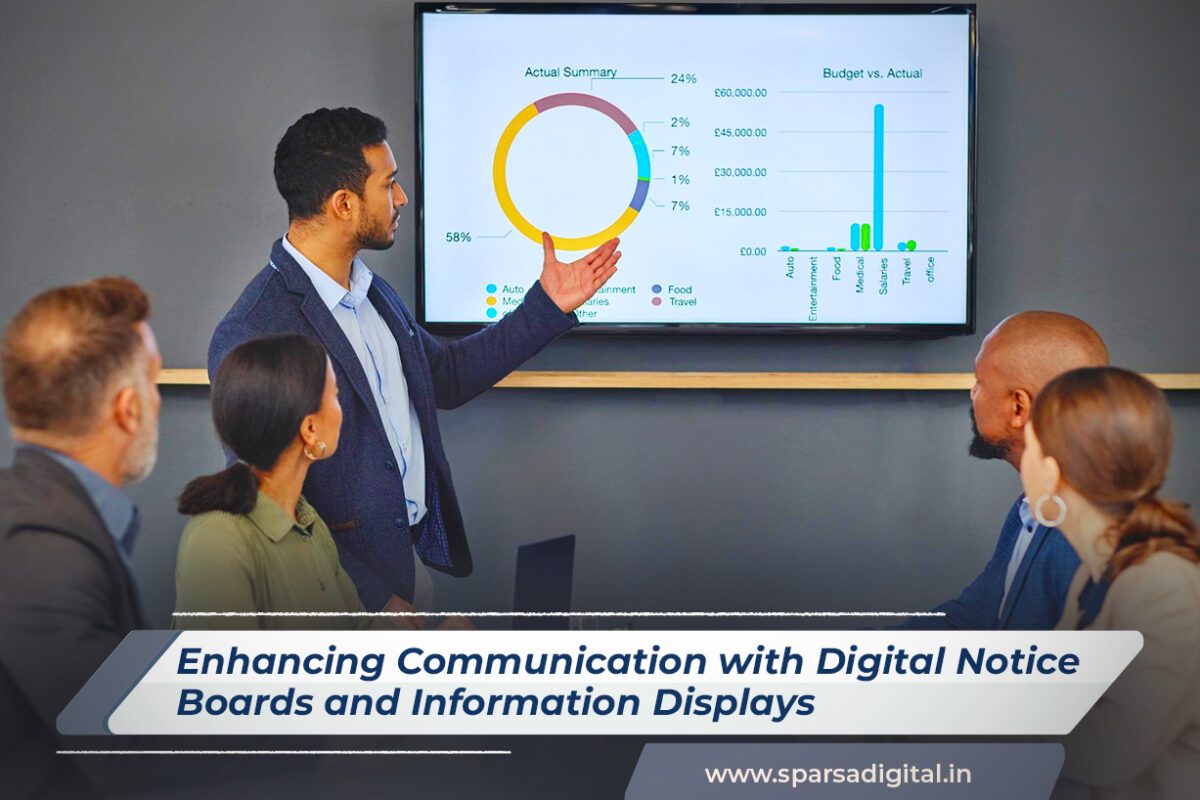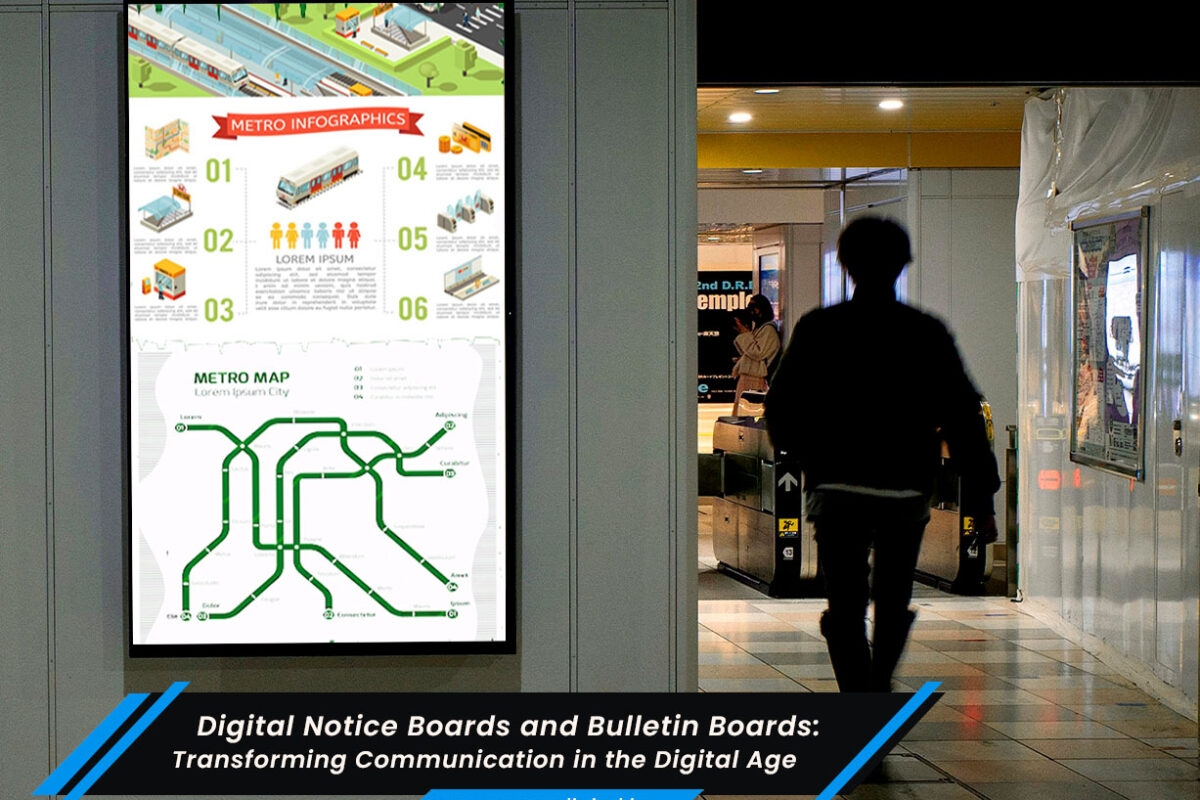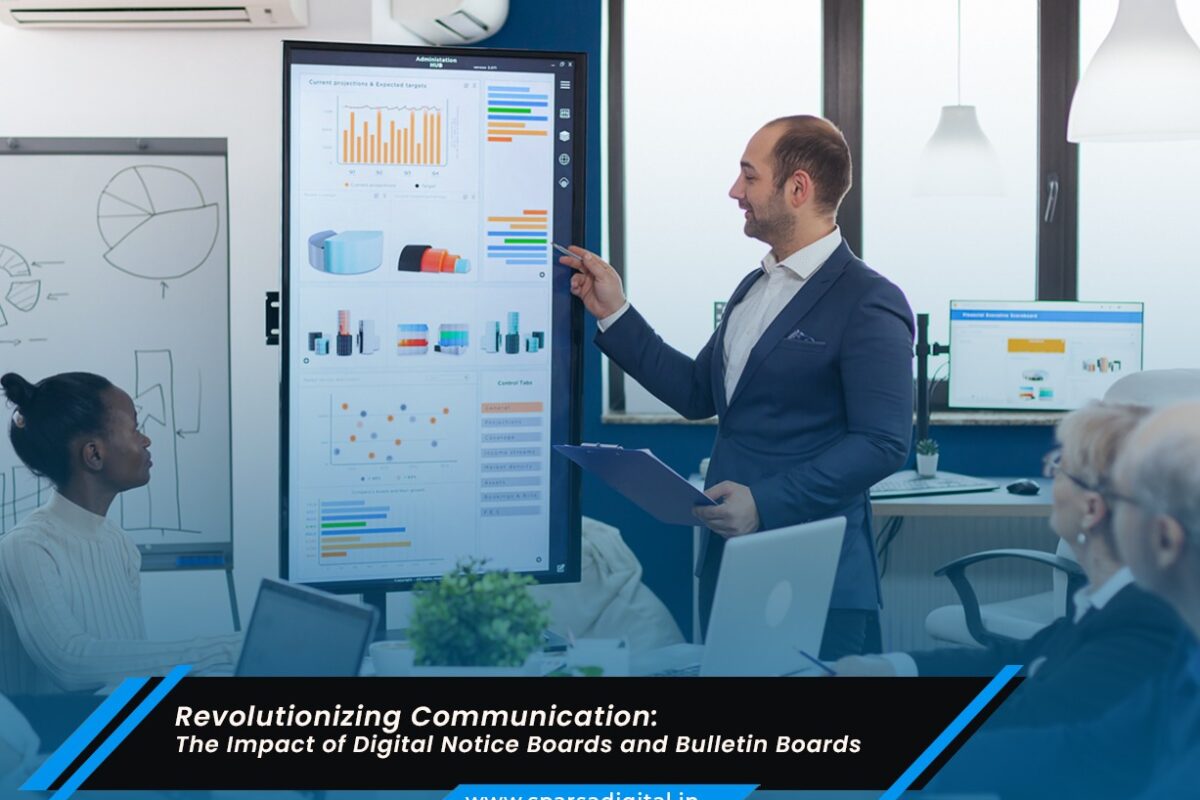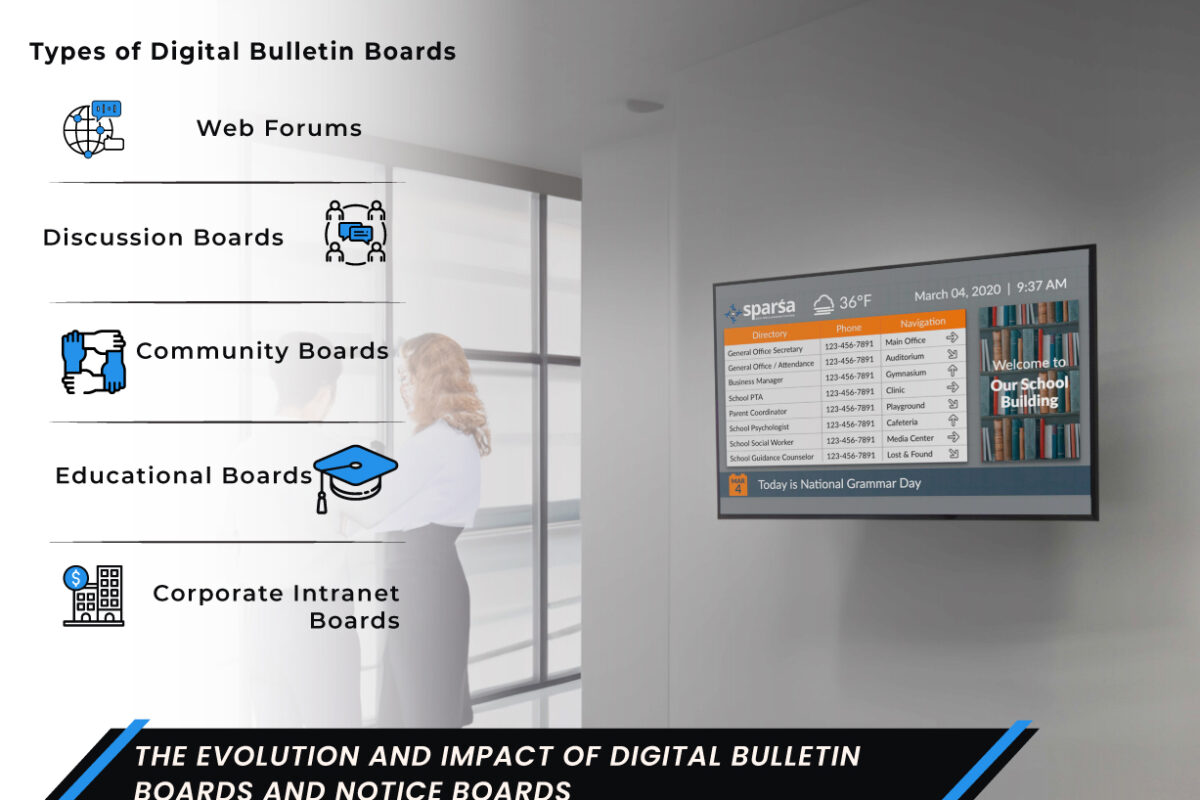In the fast-paced and information-rich environments of workplaces, educational institutions, and public spaces, effective communication is paramount. Traditional notice boards and static information displays often fall short in delivering timely and engaging messages to their intended audiences. Enter digital notice boards and digital information boards, dynamic platforms that revolutionize communication by offering real-time updates, and interactive features. In this blog, we explore digital notice boards and digital information boards, and the benefits they bring to various environments.
Communication is the lifeblood of any organization or community, facilitating the exchange of information, ideas, and announcements. However, in environments characterized by high traffic, diverse audiences, rapidly changing information; traditional methods of communication struggle to keep pace. Digital notice boards and digital information displays address these challenges by harnessing the power of technology to deliver dynamic content. This in return, captures attention and drives engagement.
The Evolution of Digital Notice Boards
The concept of digital notice boards traces its roots to the early days of digital signage. That is where static displays were replaced by dynamic electronic screens capable of showcasing multimedia content. Initially adopted by businesses for advertising and marketing purposes, digital signage quickly found its way into other settings. This includes educational institutions, healthcare facilities, transportation hubs, and government buildings.
Digital notice boards represent a specialized application of digital signage tailored for delivering announcements, updates, and alerts to specific audiences. Unlike traditional notice boards, which require manual posting and updating of notices. Digital notice boards enable remote management, making them ideal for environments where information needs to be disseminated quickly and efficiently.
Applications of Digital Notice Boards
Digital notice boards find applications across a wide range of industries and settings, including:
- Corporate Environments: In corporate settings, digital notice boards serve as a centralized platform for sharing announcements, meeting schedules, HR updates, and reminders. Interactive features such as employee recognition boards or feedback channels foster a sense of community and engagement among staff.
- Educational Institutions: Schools and universities leverage digital notice boards to communicate important announcements, event schedules, academic deadlines, and emergency alerts to staff. Interactive displays in common areas can also promote student engagement and showcase academic achievements.
- Healthcare Facilities: Hospitals, clinics, and medical offices use digital notice boards to relay critical information to patients, caregivers, and staff. This includes appointment reminders, health tips, waiting room updates, and emergency notifications. Integration with patient management systems enables real-time updates based on patient flow and occupancy levels.
- Transportation Hubs: Airports, train stations, and bus terminals utilize digital notice boards to provide travelers. For example- up-to-date information on departure and arrival times, gate assignments, baggage claim locations, and service disruptions. Wayfinding features help passengers navigate complex terminal layouts and find their destinations efficiently.
- Retail Environments: Retailers deploy digital notice boards in-store to promote sales and promotions, highlight new product arrivals. It also helps to engage shoppers with interactive content such as product demos or customer testimonials. Integration with inventory management systems ensures accurate and timely updates on product availability.
Implementation Considerations
Successful implementation of digital notice boards and information displays requires careful planning and consideration of various factors:
- Content Strategy: Developing a compelling content strategy is essential for maximizing the impact of digital displays. Organizations should create engaging and relevant content tailored to their target audience and communication objectives.
- Hardware and Software Selection: Choosing the right hardware components and digital signage software is crucial for achieving optimal performance and reliability. Factors to consider include display quality, connectivity options, content management features, and scalability.
- Integration with Existing Systems: Seamless integration with existing IT infrastructure, including network infrastructure, and data sources, is necessary to ensure interoperability and data accuracy.
- User Training and Support: Proper training and support are essential to empower users to manage and operate digital displays effectively. Training programs should cover content creation, scheduling, troubleshooting, and best practices for maximizing engagement.
- Compliance and Accessibility: Organizations must ensure compliance with relevant regulations and standards governing digital signage, including accessibility requirements for users with disabilities. Content should be designed with accessibility principles in mind, such as color contrast, and alternative text descriptions for multimedia content.
The Future of Digital Notice Boards and Digital Information Boards
As technology continues to evolve, future of digital notice boards and information displays holds tremendous potential for innovation and transformation. Emerging technologies such as artificial intelligence, augmented reality, and IoT (Internet of Things) are poised to further enhance the capabilities and functionality of digital displays.
For example, AI-powered content personalization algorithms can deliver tailored messages and recommendations to individual users based on their preferences, behaviors, and demographic information. Augmented reality overlays can provide interactive experiences that blend digital content with the physical environment, enabling users to access additional information or perform tasks seamlessly.
Furthermore, the integration of IoT sensors and data analytics enables context-aware signage that responds dynamically to environmental factors such as foot traffic, temperature, or weather conditions. For example, digital displays in retail stores can adjust promotional content based on shopper demographics and browsing patterns in real-time.
Conclusion
Digital notice boards represent a paradigm shift in communication, offering organizations and communities a versatile platform for delivering timely, engaging, and relevant content to their audiences. By harnessing the power of technology, organizations can enhance visibility, and streamline information dissemination in a wide range of settings.
While the adoption of digital signage presents challenges, the benefits in terms of flexibility, and cost savings outweigh initial investment. As technology continues to advance, the future of digital notice boards holds exciting possibilities for innovation and transformation in communication. By embracing these technologies, organizations can stay ahead of the curve and create experiences that captivate and inform their audiences.
Still wondering where to start from? Get in touch with our experts at Sparsa Digital today. Make the most out of the latest digital signage solutions for your business.

